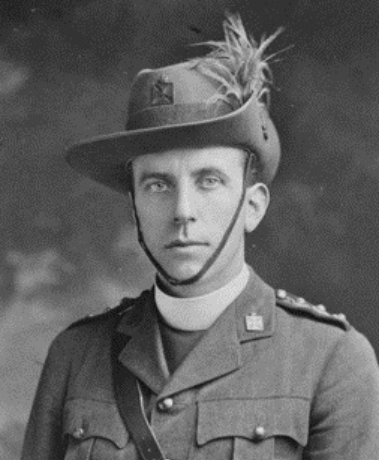Reninghelst Churchyard and Extension
- Admin
- Nov 30, 2024
- 4 min read
Updated: Apr 15
Both cemeteries were used from March to November 1915 by the Field Ambulances located in the area. Reninghelst, today it is Reningelst, I am using the wartime spelling for the village as well as other towns and villages mentioned, is a small village located in the southern part of the province of West Flanders, known as the Westhoek (the West Corner). This is a rural province and during the First World War Reninghelst was located in a restricted zone close to the front line along with the nearby villages of Ouderdom and Dickebusch. Ypres is some 10 kilometres from Reninghelst. From October 1914, the area around Reninghelst was heavily populated with gun pits, camps, Field Ambulances, railways linking the various supply camps and the main rail head of Poperinghe in the rear and further on into France. The French army occupied the area but were replaced by a multi-national allied force that came into the area and occupied the farms and barns as billets and built new camps the names of the camps tended to reflect the nationality of the units that had originally established them

The Church
In a ‘Surgeon in Khaki’ Arthur Martin, a surgeon with 15th Field Ambulance, 5th Division, which was located in the school behind the church, wrote of Reninghelst and of what he found in 1915. It was ‘a large village, or rather a small town’ and that it was an important ambulance centre for French and Belgian wounded. The village ‘had a queer Dutch-looking church’ and that this was surrounded by a closely packed graveyard with the average age of the dead being eighty-five to ninety. He then comments on the number of new graves in the area of Reninghelst and ‘they are for men who have died young, suddenly, and in the springtime of their days.’ The interior of the church he described as ‘lofty, and has little in the way of adornment’. On his first visit he found the church full of French soldiers some of whom were sleeping or sitting on the straw that covered the floor of the church. He found a ‘big group crowded round a charcoal brazier warming themselves and watching the progress of a savoury stew.’

On his second visit a few days later, the church was now a temporary hospital with the floor still covered with straw but now wounded men were lying close together on it. The charcoal brazier was still in place but now giving out heat for the wounded. Ambulance waggons full of wounded were in the street next to the church. In the church French army surgeons were ‘busy amongst the red breeched men in the church, and three of them were engaged round an improvised operating table near the altar, where a man deeply under chloroform was having his jaw wired with silver wire for a bad fracture from a piece of shell.’ He observed that some women of the village were carrying soup to the wounded who were lying propped up against the walls of the church and an old white-haired priest was giving the last rights to a dying man. He found one man restlessly rolling in his bed of straw a sign he concluded of a man in need of medical attention and he found that his wound was bleeding through the bandages. Having stopped the bleeding and changed the man’s dressings he was thanked by the chief surgeon. He noted that most of the men had been wounded by shrapnel ‘it rips, tears, and lacerates the tissues, and repair is often impossible in face of anatomical devastation.’
Churchyard Cemetery and Extension
There are three graves in the churchyard and fifty-six graves in the Extension. Buried in the Churchyard Extension is an Australian Army Chaplain Reverend Michael Bergin MC who was killed in action on 12 October 1917, age 38. He enlisted on 13 May 1915 and served in the Gallipoli campaign. He never set foot in Australia being born and educated in Ireland where he joined the priesthood and went to what is today the Lebanon as a missionary. He enlisted in the Australian army when he left his position in Beirut and went to Cairo where he learned of the needs of the Australians for catholic priests. He served with the 5th Light Horse in the Gallipoli campaign as a stretcher bearer and was evacuated on 5 September 1915 to England suffering from enteric fever. He returned to Egypt on 27 January 1916 and was appointed chaplain to the 51st Battalion on 26 March 1916 and went with the unit to France in June 1916. He was posthumously awarded the Miliary Cross on 1 January 1918 for distinguished service in the field. He is buried in Grave I in the cemetery. Achiel Van Walleghem officiated at his funeral recording in his diary: ‘We hear the sad news of the death of Father Bergin, Irish Jesuit and chaplain to the 13th Australian brigade… As a chaplain, he soon attained the rank of captain and was now a major. We got to know him in September 1916…A few weeks ago he returned here to the Ypres front and yesterday evening he fell, sacrificing himself in the name of duty, killed by a shell a few minutes’ walk from the village square in Zonnebeke. His body is being brought here this afternoon for the funeral tomorrow.’
Cemetery Location
The cemeteries are located in the centre of the village of Reninghelst (now Reningelst) 9.5 Km south west of Ieper.

Burials
Churchyard
UK - 3
One is a Special Memorial to a British soldier Believed to be Buried in the churchyard and whose grave was subsequently lost.
Churchyard Extension
UK – 55
Australian – 1
There are two World War II graves










Comments